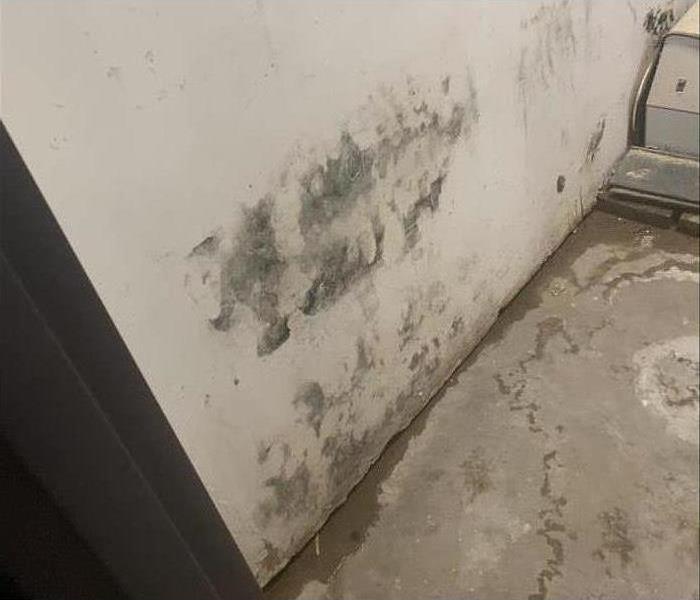How To Reduce Secondary Damage From Flooding
2/10/2022 (Permalink)
How to Minimize Flooding's Secondary Effects
Flooding from torrential rain or broken pipes can be overwhelming. Water damage can be expensive to repair, and floodwater may damage your personal belongings. Along with obvious problems like ruined sheetrock and flooring, flooding can also cause secondary damage in the form of black mold and mildew. High humidity and excess moisture can cause mold to grow and spread quickly in your Lake Point, TX home, so it is important to get it under control as quickly as possible by following four steps.
1. Assess the damage. Mold usually grows in hidden places, so you should not assume there is no fungus just because you cannot see it at first glance. It is important to investigate thoroughly to understand the extent of the problem if there is one. Mold frequently grows in the hidden places listed below:
- Inside wet walls
- Under damp carpet
- In porous items that have absorbed water
- Inside damp base cabinets
2. Remove damp materials. Because excess moisture encourages the growth of black mold, any wet materials need to be torn out of the home as part of the mold removal process. Porous personal items can be saved, but should be dry cleaned. Wet flooring and damp sheetrock need to be torn out and removed so the mold can be treated.
3. Dry the area. Once all wet materials have been removed, use fans and dehumidifiers to help dry the area. Opening windows to allow fresh air to circulate may also help dry out our home. Any trace of moisture should be gone to prevent mold from spreading before you can treat the existing fungus.
4. Use an antifungal treatment and disinfectant to remove mold. Spray an antifungal solution on existing mold and clean thoroughly with household cleaning products. While the first three steps limit the spread of mold, this one eliminates the fungus.
If not dealt with quickly and properly, black mold can spread quickly, posing serious to your home. High humidity can increase the growth of the fungus, leading to even more expensive secondary damage. Following the four steps above may help contain and eliminate the problem.




 24/7 Emergency Service
24/7 Emergency Service
